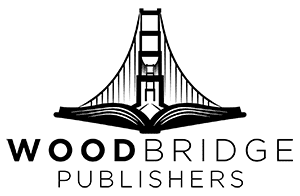Whether you’re an experienced author looking to publish your next book or someone writing their first novel, publishing your book traditionally takes some work. The process involves several important steps, from manuscript preparation to promotion. Let’s take a deeper look at each stage.
Prepare Your Manuscript
The first and most important step is ensuring your manuscript is polished and ready for submission. You’ll want to devote significant time to editing and revising your work. Read through your story with a critical eye, tightening plots, refining characters, smoothing transitions, and improving dialogue. Have others you trust read it to get an outsider’s perspective.
In addition to content edits, you’ll need to meticulously format your manuscript according to publisher submission guidelines. Font style and size, spacing, paragraph indentations, and page numbering should be exact. Various formats like Times New Roman 12pt or Courier 12pt are common standards.
Proofread numerous times to catch minor errors that slipped by earlier. Check for consistency in character names, locations, dates, and other details. Publishers expect submissions to be virtually flawless from a technical perspective. Presenting sloppy or hastily prepared work could result in instant rejection. Put your best foot forward with a pristine manuscript.
Research Publishers
Spending time finding the right publishing houses for your book is crucial. Look at publishers that issue books similar in genre, writing style, and content to yours. Check what types of titles they’ve released in the last year or two to get an idea of their tastes. This targeting makes your pitch more relevant to their strengths.
Compare publishers of books you love or that did well critically and commercially. Their name alone may attract extra attention. Reading publisher websites, catalogs, and submission guidelines can also provide valuable information on what genres and styles of writing they seek. Take notes on any specifications unique to individual imprints.
Don’t limit your search only to the biggest New York houses. Many emerging and independent presses offer more personalized levels of support. Cast a wide net to uncover the best opportunities for your project. Exploration at this phase pays dividends down the road.
Query Publishers
Now, it’s time to start pitching your book. Carefully construct personalized, compelling query letters based on what you’ve learned about publishers. Open with an engaging summary of your book in 1-2 paragraphs. Share any relevant publishing experience or author credentials in 1-3 brief sentences.
Close by respectfully requesting consideration of your full manuscript and include your anticipated publication date. Proofread queries to eliminate errors that look sloppy. Have writer friends read templates to strengthen your pitch.
Send queries to around 5-10 publishers initially, targeting those most aligned with your genre and book vision. Digital submissions via email or online submission portals are standard today. Be sure to follow all instructions specified on publisher websites.
Queries should demonstrate the publisher’s catalog knowledge and not rely exclusively on generic pitches. Dynamic queries pique interest, whereas bland templates are likely to be discarded. You only get one chance to make a strong first impression.
Submit Your Manuscript
Wait several weeks before following up, as publishers consider multiple queries simultaneously. Only send your full manuscript if directly requested; don’t attach it initially or send unsolicited. This slows consideration and annoys acquisition teams.
When invited to submit, triple-check submission guidelines and format your manuscript and materials accordingly. Ensure title pages, synopses, author bios, and other requested items are polished and presentable. Send via a method specified by the publisher, like postal mail rather than email.
Tracking submission details aids follow-up. Note the editor’s name, submission date, projected timeline and any other pertinent notes from initial correspondence. This organized record-keeping streamlines potential future discussions.
Be patient as editorial teams discuss projects and decide on final callbacks or rejections. Publishers strive to respond promptly, but editorial calendars can delay replies for several months. Checking in periodically is reasonable, but don’t pester publishers waiting on their internal processes.
Handle Rejection Professionally

Rejection is an expected, natural part of traditional publishing. Don’t give up at the first dismissal, as each piece of feedback provides insight into strengthening your subsequent queries and pitch. Thank publishers politely for their time and consideration, regardless of the outcome.
Examine rejection letters for possible clues to issues editors saw. Was it a lack of market demand, competition from similar books, identifiable content, tone or writing style weaknesses? Look for constructive criticism to refine your work and approach.
Keep pitching your revised manuscript to other suitable publishers until finding an enthusiastically interested match. Stay determined without bordering on obsessive. Remember that dozens of submissions may be necessary and part of developing your writer’s resilience. With revisions and refined queries, your book will eventually appeal to the right acquiring editor.
Accepting an Offer
If a publisher extends you an offer, thoroughly read the full contract. Note key points like financial terms, subsidiary rights, royalties, delivery deadlines, promotional obligations, and anticipated print runs. This legal document outlines the commitments binding both parties.
If you have one, have your agent review and potentially negotiate clauses like greater advances, higher royalty rates, grants of subsidiary rights or additional promotional support on your behalf. Before signing on the dotted line, make sure all terms align with your expectations and goals for the project.
Publishers will also provide estimated timelines for developmental edits, copyedits, proofreading, interior layout/design, cover creation, printing, marketing and publication. Work closely with your acquiring editor to provide feedback, ensure clarity in dialogue and address any other editorial requests they have as production begins. Meeting deadlines remains essential.
Promote Your Book
While publishers handle larger marketing campaigns, authors serve as public faces and ambassadors. Volunteer for author events, interviews, guest blogging spots and other promotions arranged through your publisher. Leverage your existing website or blog following to tell people about the publication.
Propose ideas for related media that excite you, like online book clubs, podcast interviews, guest articles in genre publications and targeted speaking engagements. Social channels provide free avenues for self-promotion through videos, blogs and engaging updates on your book journey.
Send review copies to trusted readers alongside a personal note to spread enthusiasm. Thank bookstores/libraries for supporting your launch in person whenever possible. Collaborating creatively with your publisher paves the way for the ongoing success of your debut and subsequent titles. Stay invested in cultivating enthusiasm from your earliest champions.
Independent Options
For writers who do not find success through traditional routes or value ongoing control, independent publishing remains an alternative. Research legitimate self-publishing services and niche independent presses to see if their levels of creative freedom, royalties and services meet your needs.
Self-publishing requires absorbing roles like editing, design, printing, distribution and marketing, which publishers normally handle. To gain credibility, budget accordingly for higher costs and invest heavily in high-quality production values. Independent paths also necessitate unparalleled motivation for do-it-yourself promotional activities.
Approach independent options strategically after exhausting traditional pitches or having an evidenced built-in readership base. Keep an open mind as major publishers and upstart competitors increasingly blur traditional lines in this evolving industry. Find the best match for your unique goals and writing career stage.
Hopefully, this deeper overview has equipped you to navigate the multi-step publishing process confidently. Asking questions of your acquired editor along the way also ensures a smoother journey. With perseverance, your book can find the audience it deserves. I wish you the best of luck in bringing your story to readers!
Frequently Asked Questions
1. What is traditional book publishing?
Traditional book publishing involves securing a contract with a publishing house that handles editing, designing, printing, and distributing your book. Authors typically work with literary agents to navigate this process.
2. How do I find a literary agent?
To find a literary agent or research agent who represents your genre, prepare a professional query letter and submit it according to the agent’s guidelines. Resources like Writer’s Market and agency websites help identify potential agents.
3. What should I include in a query letter?
A query letter should include a brief introduction, a concise summary of your book, a short author bio, and why you’re contacting that specific agent. Keep it professional and engaging to capture the agent’s interest.
4. How long does the traditional publishing process take?
The traditional publishing process can take anywhere from 18 months to several years. This timeline includes finding an agent, securing a publishing deal, editing, design, printing, and distribution.
5. What are the benefits of traditional publishing?
Traditional publishing offers several benefits, including professional editing, cover design, and marketing support. Additionally, it often provides broader distribution through bookstores and libraries, enhancing the book’s visibility and credibility.



